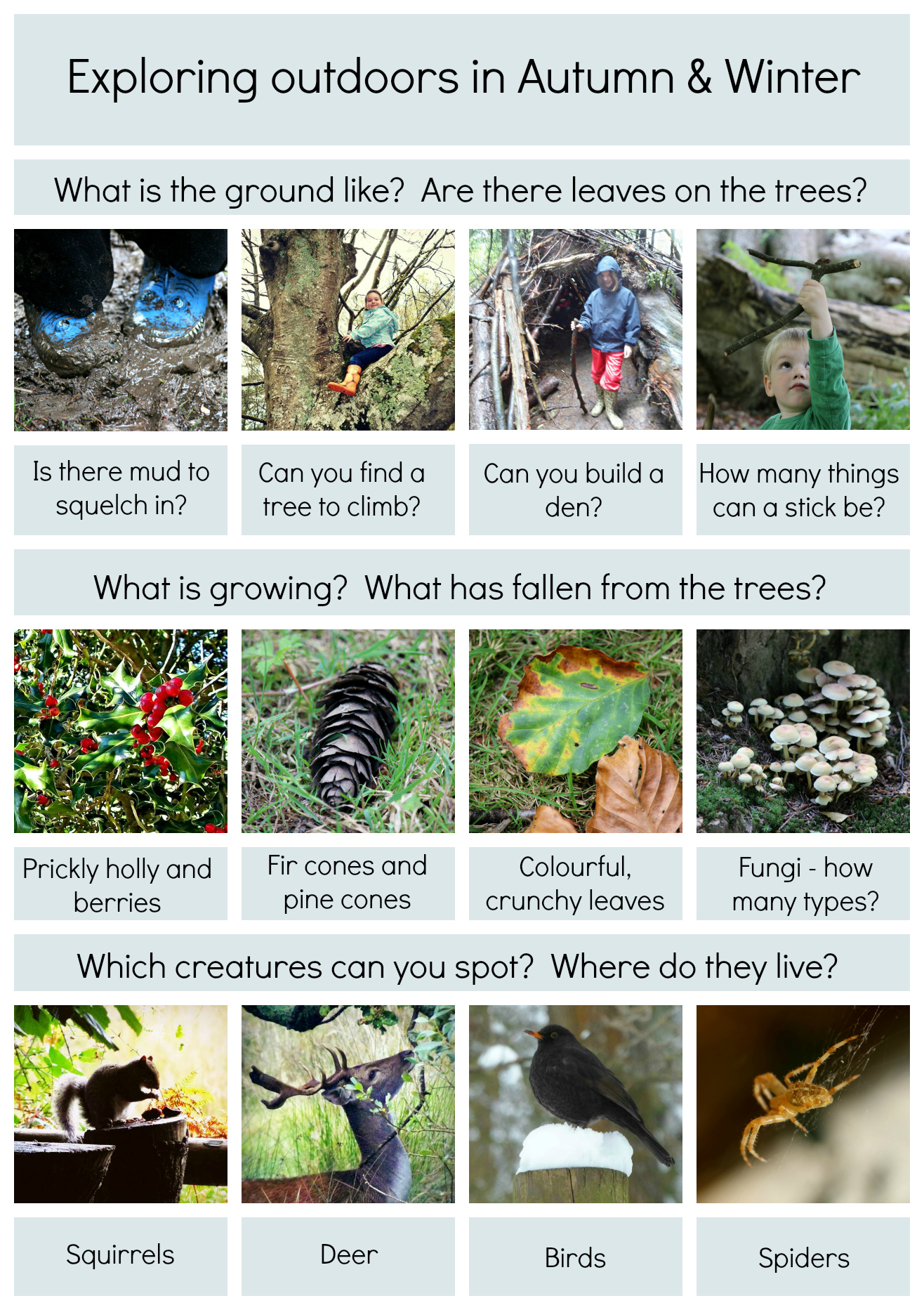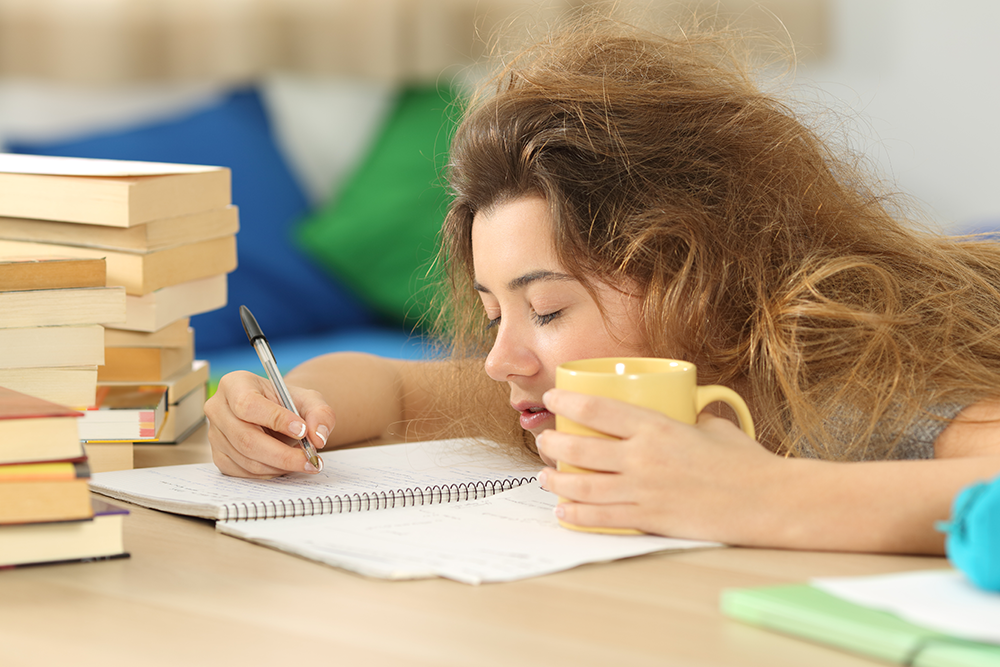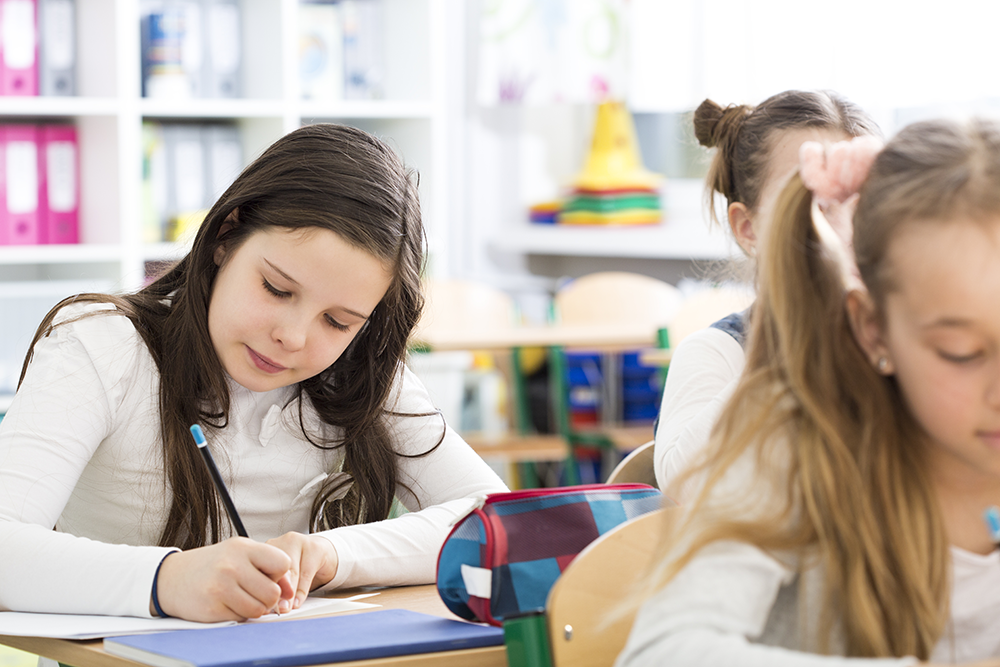 When the weather starts to turn colder there can be a huge drop in the amount of time children spend outside. Particularly on rainy days, putting on extra layers and waterproofs can seem like a lot of hassle and staying indoors where it’s warm and cosy can be very tempting. However, exploring outdoors should be encouraged at this time of year, as children can learn so much about the world around them by looking at the changes between the seasons. Of course, the fresh air and physical activity is beneficial too!
When the weather starts to turn colder there can be a huge drop in the amount of time children spend outside. Particularly on rainy days, putting on extra layers and waterproofs can seem like a lot of hassle and staying indoors where it’s warm and cosy can be very tempting. However, exploring outdoors should be encouraged at this time of year, as children can learn so much about the world around them by looking at the changes between the seasons. Of course, the fresh air and physical activity is beneficial too!
So, wrap up warm, put on some wellies and get exploring with your children, whether it’s your own garden, the local park or nearby woods. You can use the activity sheet and the questions below for a little inspiration.
Is the ground dry or muddy?
If the ground is muddy, young children might love to squelch through it with their wellies. You could use the mud like clay to mould into shapes on the ground and decorate with twigs, leaves and berries. If your ‘mud art’ is in a park or woodland it will be fun for other people to discover!
Are there leaves on the trees?
You could ask your child to try and identify which trees are deciduous and which are evergreen. Young children might like to collect any colourful leaves and make a collage at home. Remember to explain that they should only ever take leaves from the ground, not straight from a tree.
Climbing trees is often discouraged these days but children need to be able to take measured risks once in a while. They can carry out their own risk assessment, choosing the tree which looks the strongest and figure out how to safely get from one branch to the next. It is a very different and more complex experience from a man-made structure such as a climbing frame.
What could you do with fallen branches and twigs?
You could use fallen branches to help your child build a den to shelter them from the wind. Make sure it is on flat ground and built well enough to not fall and hurt anyone. Younger children could try building a miniature den for a teddy or for the forest fairies!
There are so many ways little ones can use their imaginations in the woods, for example, what can a stick be? How about a pirate’s sword, a light sabre, a wand or a hobby horse?
How many types of fungi can you see?
Older children could take a log book or camera and record how many different types of fungi they find. They could think about where it grows and the type of conditions it needs to live.
Which animals and birds can you spot?
You could discuss where these creatures live. Nests and holes in deciduous trees should be much more visible in autumn and winter. Explain how some animals hibernate over the colder months and how they need warmth and shelter. You could use some logs, stones and leaves to build a mini-beast hotel.
It’s good to have a few structured activities, but children also need time for free play. Outdoor play in particular can enhance their creativity and they may come up with their own games and ideas! As long as you have suitable clothing, outdoor play should not be confined to the warmer months as autumn and winter can be a magical time, full of learning opportunities. Have fun exploring!
Written by Helen Clarke, blogger and Mummy to ‘The Princess and the Pickle’ theprincessandthepickle.blogspot.com


